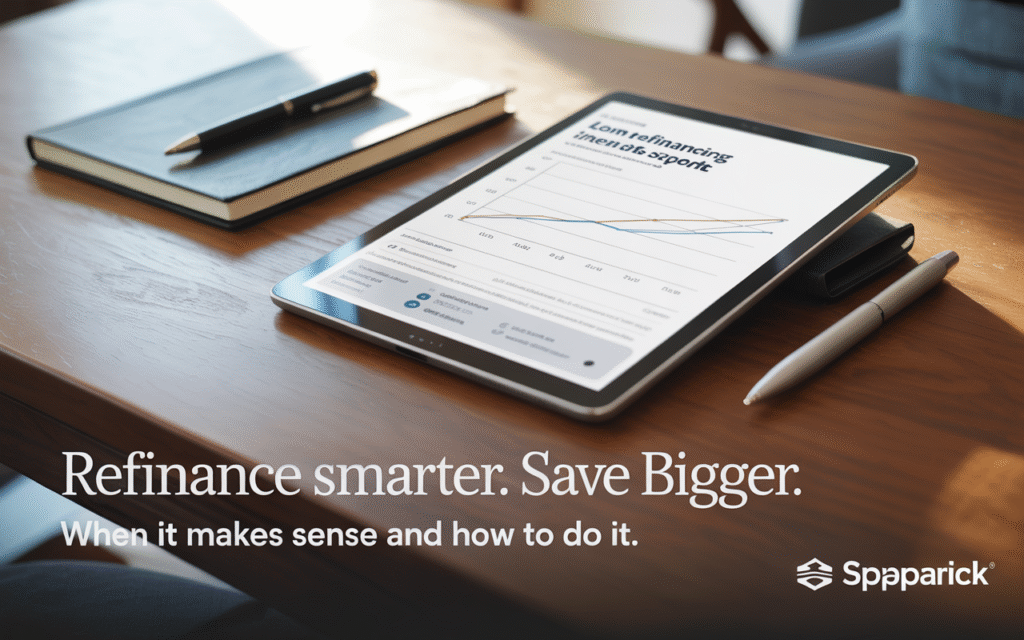
Hey, I get it—money stuff can be confusing and sometimes downright stressful. Especially when you hear words like “refinancing” and your brain immediately starts thinking, “Ugh, more paperwork? More fees? More confusion?” Believe me, I’ve been there. The truth is, refinancing can be a real game-changer if you know when and how to do it right. And if you don’t, well… it can also lead to more headaches.
So let’s just talk about this like friends, alright? I want to help you figure out if refinancing makes sense for your situation, and how to avoid common traps. No fancy jargon, no boring lectures—just real talk and practical tips.
What Is Refinancing Anyway? (And Why Should You Care)
Alright, here’s the quick and dirty: refinancing means replacing your current loan with a new loan—usually with better terms. The idea is to save money, lower your monthly payments, or sometimes both.
Picture this: You took out a car loan two years ago with a 10% interest rate. Now, interest rates have dropped and your credit score is better. If you refinance that loan at, say, 6%, you could save a bunch of cash every month and maybe pay off your car earlier.
But—and this is a big but—refinancing isn’t always the right move. Sometimes, fees and other costs can wipe out your savings.
When Does Refinancing Actually Make Sense?
The truth? Not everyone needs to refinance. But if you find yourself nodding to any of these, it might be worth a closer look:
- Your interest rates are higher than current market rates. Like I said before, rates can drop, and if your credit has improved, lenders might offer you better deals.
- You want to lower your monthly payments. Maybe your budget got tighter, and spreading out payments over a longer time frame feels less stressful.
- You want to pay off debt faster. Sometimes, refinancing into a shorter loan term with a better rate saves you money in the long run.
- You want to switch loan types. For example, switching from a variable rate loan to a fixed rate loan to avoid surprises in payments.
Ojo Con Esto: Fees, Fees, Fees
Here’s the thing no one likes talking about—refinancing usually comes with fees. Sometimes they’re small, sometimes they’re a pain. Things like:
- Application fees
- Origination fees
- Prepayment penalties on your old loan
- Closing costs
These can add up fast. So before you jump in, do the math. Calculate how much you’d save monthly versus what you’ll pay in fees.
A friend of mine, Lisa, refinanced her student loan thinking she’d save big. But she forgot to check if her original loan had a prepayment penalty—and ended up paying $600 in fees. Lesson learned: always read the fine print.

How to Start the Refinancing Process Without Losing Your Mind
If you’re thinking, “Okay, this sounds good, but where do I even start?”—I got you.
- Check your credit score. Your rate depends a lot on your credit. If it’s improved since your original loan, chances are you’ll get better offers.
- Gather your current loan info. Know your interest rate, how much you owe, and your payment history.
- Shop around. Don’t just go back to your old lender. Use sites like LendingTree or NerdWallet to compare rates and offers. Even credit unions can have competitive refinancing deals.
- Calculate the total cost. Use an online loan calculator (I like Bankrate’s). Plug in your numbers, include fees, and see if refinancing truly saves you money.
- Ask questions. Don’t be shy! Call lenders, ask about fees, repayment terms, and if there are any penalties.
Real-Life Example: How Refinancing Helped the Johnsons
The Johnson family was juggling two car loans and some credit card debt. Mr. Johnson’s credit score had improved from 620 to 700 over three years. They refinanced one car loan from 9% to 5.5% and consolidated their credit card debt into a personal loan with a lower rate.
It wasn’t all sunshine—there were fees involved, and they had to extend one loan by a few months to get a lower payment. But overall, they saved about $150 a month, which helped them build an emergency fund and reduce stress.
Helpful Tools and Resources to Keep Handy
Look, managing loans and refinancing isn’t rocket science—but having the right tools makes it way easier:
- Apps like Mint or EveryDollar: To keep track of your budget and see how refinancing affects your cash flow.
- AnnualCreditReport.com: Check your credit report for free once a year to spot any mistakes or fraud.
- Books like “Your Score” by Anthony Davenport: If you want to get serious about understanding your credit.
- Nonprofit credit counselors: If you’re overwhelmed, reaching out to places like the National Foundation for Credit Counseling can be a lifesaver.
Final Thoughts: Don’t Be Afraid to Take Control
Refinancing can feel intimidating, but honestly, it’s just another tool in your financial toolbox. The key is knowing when it makes sense for you, and being smart about it.
The truth is, money stuff is complicated sometimes. But you’re not alone, and you’re capable of figuring it out. Take your time, ask questions, don’t rush. If you do that, refinancing could be the step that makes your life a little easier.
Remember—this isn’t about perfect moves or instant fixes. It’s about steady progress and making your money work better for you.
So yeah, give it a shot when the time’s right. You might be surprised how much difference a lower interest rate or smarter loan terms can make.
And hey—if you mess up? It’s cool. We all do. What counts is that you’re trying and learning.
